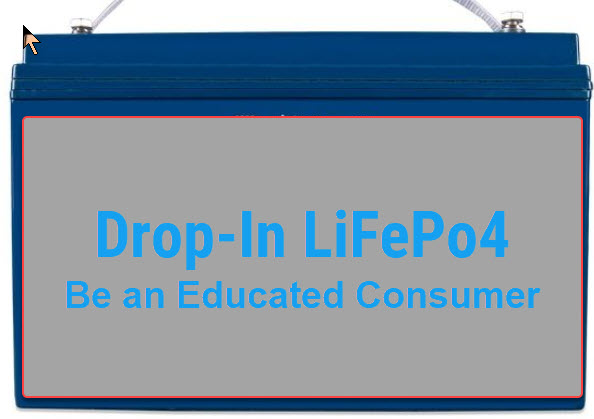With all due respect, this goes against the fundamental chemical process inherent in lead acid battery chemistry.
Potentially it is less noticable, and the smaller crystals may not cause the mechanical damage that the larger crystals may cause, however, the fundamental chemistry is the same. Lead sulfate does not break down into lead and sulfur at charging voltages, that's what equalization voltages achieve.
It's possible that you can allow more sulfation to occur and still be able to equalize to remove it, I don't know. In standard deep cycle batteries the lead sulfates can get buried too deeply into the lead on the plates such that equalization cannot break it back down. But when the lead is tied up in lead sulfate, it is removed from the battery capacity, hence battery capacity must be lowered.
dj
The Firefly manual makes no reference to an "equalization" charge. They do call for periodic restoration charges which are high current charges, followed by a deep discharge. From the manual:
Restoration Charge
As stated, Firefly Batteries can operate in a partial state of charge for long periods of time without sustaining any permanent damage. The usable capacity will decrease, however, with each cycle within a partial state of charge, up to a point. In order to regain the full original capacity and in some cases more, it is necessary to perform a restoration charge. To perform the restoration charge: charge the G31 to 14.4V or the L16 to 4.8V and continue to charge until the current drops to 0.5 A on the G31 or 3A on a L16. Fully discharge the battery to 10.5V (G31) or 3.5V (L16), and then repeat the same charge cycle.
The recommended charging current is .4C to .5C @14.4v, which is about 45 amps per battery. As for breaking the ionic bonds in the sulfate crystals, I draw a parallel to salt. Finely ground salt dissolves into solution more quickly than large crystals. Admittedly it takes more energy to break the bonds in lead sulfate than salt, however, it is difficult for me to see how that basic principle we see in salt would not apply to lead sulfate, smaller crystals are easier to put in solution than larger crystals.
High equalization voltages in FLA batteries are needed to mix the electrolyte as it will stratify with a higher concentration of sulfuric acid at the bottom than the top of the battery. The high voltage is necessary to cause convection currents to mix the water and sulfuric acid. An AGM battery like the Firefly does not have the same level of stratification as a FLA battery and the sulfate crystals do not settle to the bottom of the battery case. Thus, destratifying the electrolyte is unnecessary.
As I understand equalization charging of an FLA battery it is done at the .2C rate at ~15v. For a 100 ah battery that is 300 watts (20a * 15v). The normal charging condition for a Firefly is 14.4v at .4C, the battery is charged at 669 watts (46a @ 14.4). This is more than twice the energy provided in the equalization phase of a FLA battery.
If this is all correct, then it explains why an equalization charge is not needed and why repeated shallow charging is deadly to FF batteries. Functionally, every charge cycle at the recommended current is in essence an equalization charge. Lower charge currents supply much less power than the typical FLA charge current, i.e., 20a @ 14.4v (288w) vs. 20a @ 14.8v (296w). Without the high current charge the sulfate crystals build up in the foam, reducing the batteries capacity.
Of course, all of this is kind of moot since FF batteries are no more.





